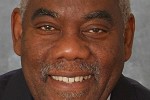By Dr Selwyn R. Cudjoe
March 12, 2018
 Last Thursday, International Women’s Day (IWD), millions of women around the world celebrated “the social, economic, cultural and political achievements of women.” The day also marked “a call to action for accelerating gender parity.”
Last Thursday, International Women’s Day (IWD), millions of women around the world celebrated “the social, economic, cultural and political achievements of women.” The day also marked “a call to action for accelerating gender parity.”
Their website reminded us that IWD has occurred “for well over a century, with the first March 8 IWD gathering supported by over a million people in Austria, Denmark, Germany and Switzerland.”
On Thursday and Friday Wellesley College in partnership with the Mastercard Foundation held an African Women’s Leadership Conference that celebrated some of “the most influential and inspiring voices in African women’s leadership, representing arenas as diverse as education and politics, health and technology, entertainment and law.”
The invited guests included Ellen Johnson Sirleaf, President of Liberia (2005-2018) and Nobel Laureate Agnes Binagwaho, Vice Chancellor, University of Global Health Equity and former minister of Health, Rwanda; Hauwa Ibrahim, Nigerian International Human Rights and Shariah Law Attorney; and Kakenya Ntaiya, Kenyan educator and social activist.
In her opening address, “African Women’s Leadership Through the Ages,” Professor Filomina Steady of Wellesley College reminded us that one of the earliest women’s suffrage movements took place in Sierra Leone in 1792 where all heads of households, a third of whom were women, voted.
Simon Sharma, Professor of history at Columbia University, observed: “Female voting was something that even the French Revolution, in its most radical phase had not been able to contemplate. Indeed, the Jacobins were hostile to the idea. It was momentous, then, that the first women to cast their votes for any public office anywhere in the world were Black liberated slaves who had chosen British freedom” (Rough Crossings).
Professor Steady noted that this was forty years “before the suffragette movement gained the right to vote in Britain in 1832 and eighty years before the women in the United States got the right to vote in 1920.”
Maybe the activism of the Sierra Leoneans was infectious. Between 1841 and 1861 3,383 Sierra Leoneans (called Liberated Africans) settled in Trinidad. On October 1,1849, about 5,000 Trinidadians (about one twelfth of the population) revolted against the unjust Goal Regulations proclaimed by Lord Harris, governor of the island.
On October 6, 1849, Lord Harris wrote to Earl Grey as follows: “I am very sorry to have to inform you of a very wanton and disgraceful riot that took place in this town on Monday last, the 1st instant, by which the deliberations of the Legislative Council were temporarily interfered with, the Council Chambers were injured, the windows of the Government buildings broken; and the lives of two persons sacrificed.”
The government had proposed to shave the hair of the prisoners. This was sacrilegious to the women. The governor realized his mistake after the revolt. He wrote to Earl Grey: “It appears that this was considered a great punishment, more particularly by the women.”
The women revolters greatly outnumbered the men, even though they were half the population. They were fiercer and more belligerent than the men. Felicite Jean Robinson, the most belligerent of them all, had come to battle. She was a fisherwoman, wearing a broad-brimmed straw hat, which, at times, was tied to her back.
Felicite carried a boutou in her hand, used by fisherwomen to carve their fish. Boutou was a good Carib word. It meant an object that kills. In Martinique, they had the saying, Ki-ki-ri-bou: “Death struck him,” an expression that was used in certain threatening situations.
Felicite protested vehemently about the shaving of the women’s hair. William Collin Sullani, a police constable, captured one of her many moods during the protest: “When I saw her she was walking about in a menacing attitude, talking violently in French and pulling her hair and flourishing her stick. There was a crowd and she was one of the most conspicuous objects in it. The stick she had in her hand was from 20 inches to 2 feet long and as thick as a man’s wrist…. Her language was very violent.”
There were other women leaders in that revolt. Maria Teresa was anger personified. She was one of the first members that stormed Government House on the morning of the attack. At the trial Oscar Fitz Allan, a policeman, testified: “I computed she was mad. She was full of rage. The others were more quiet but she was still going on. This was about an hour after the reading of the paper [the Riot Act.]”
These are the stories of two of the women who fought fearlessly for our freedom. C. L. R. James understood the central role that women played in our liberation. He says the marketplace has always been the center of West African life: “Although largely illiterate, [they] were a dynamic element in the population, active, well informed, acute, and always the very center of events” (Nkrumah and the Ghana Revolution.)
In honor of IWD, we should dedicate ourselves to remembering the lives of these women who gave so much to make us free. Maybe, just maybe, we can take a fraction of the thousands of dollars we give to the calypso monarchs and devote it to researching the lives of all those unnamed and unfamed women who lie forgotten in their graves.
